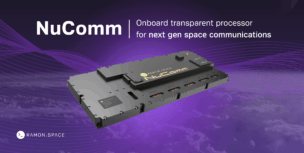For the last ten years, the pace of activities in space has dramatically increased, providing new capabilities that contribute to economic growth, improve science, and better connect the global community. To extend the benefits of these services, satellite operators from around the world have developed increasingly sophisticated constellations leveraging satellites equipped with advanced technology.
Now, for the first time, major operators Iridium, OneWeb, and SpaceX have come together to produce a holistic set of best practices in partnership with the American Institute of Aeronautics and Astronautics (AIAA). These best practices are drawn from years of operational experience and the understanding that comes from working together to maintain sustainable orbits. This set of best practices can guide and improve cooperative operations, helping to ensure that future generations maximize the benefits of space.
Why make it official? In recent years, the private sector has joined with an increasing number of countries launching satellites to rapidly grow the global space economy. The maturation of increasingly smaller satellites provides a means to replace and upgrade older technology cheaper and faster, which has led to the deployment of satellite constellations that provide services ranging from imagery to high-speed broadband internet access. Given the rapid innovation occurring in the space sector, governments have a responsibility to put appropriate regulatory structures in place that keep pace with and promote this innovation. To be effective, these regulations must strike the appropriate balance of maintaining sustainable operations in space without stifling innovation or preventing beneficial new applications from developing. Striking this balance is not straightforward, especially considering that space is a global domain, meaning individual countries must avoid creating an unmanageable patchwork of incongruous rules.
Innovation cannot wait for what promises to be a long and arduous journey to create rules that will effectively govern space and operations. Guidelines and best practices for new and emerging systems are generally more effective than rigid and static regulations that can quickly become out of date and lock in aging technology. Evolving best practices can provide the flexibility necessary to upgrade older technology and develop new innovations that improve both space operations and life on the ground. The private sector has unified incentives to work together to protect the orbits where it does business. As technology improves, regulations can then be developed to better reflect a mature industry.
Recognizing the need to have a well-understood set of operational principles, safety standards, and behaviors that allow all operators to thrive, the satellite industry has worked together in several venues, both domestic and international, to discuss and document best practices or safety standards. To be sure, others have created “how-to” documents that explain the space domain and how to operate spacecraft safely and minimize debris generation in space, providing valuable advice to new entrants. Providing for a safe and efficient operation of satellite networks is in the best interest of the private sector. For example:
- The NASA Spacecraft Conjunction Assessment and Collision Avoidance (CARA) Best Practices Handbook provides detailed step-by-step instructions on how to work with the 18th Space Defense Squadron, which currently provides collision warnings and information on how conjunction analysis is performed. Collision avoidance responsibilities have now been transferred to the 19th Space Defense Squadron.
- The Secure World Foundation’s Handbook for New Actors in Space is a primer for those new to the space sector and provides terminology, an overview of the sector, and suggestions for how to successfully engage in space activities.
- Individual operators have posted public-facing and detailed explanations of how their systems approach space safety and issues, like satellite brightness, that are important to the astronomy community.
Other work has focused on space safety and sustainability.
- The US Space Force’s Spaceflight Safety Handbook for Satellite Operators provides background information and comprehensive details about its services and how to interact productively for conjunction services.
- The Space Safety Coalition’s Best Practices for the Sustainability of Space Operations focuses on specific measures and guidelines for operators to consider to enhance the safety and sustainability of the space domain.
All these documents above provide information with which operators should familiarize themselves. To be clear, the recommendations and guidelines cited in this document do not contradict or supersede these earlier works. Instead they are intended to provide a broader, more comprehensive set of guiding principles as compared to the more detailed and nuanced recommendations in the handbooks cited above.
The best practices presented in the document are designed to be applicable to any operator anywhere in the world, regardless of how they receive conjunction warnings, and represent the best practices that the signatories have adopted. Ideally, the best practices contained herein can provide a foundation for discussions leading to a global consensus of behaviors.




